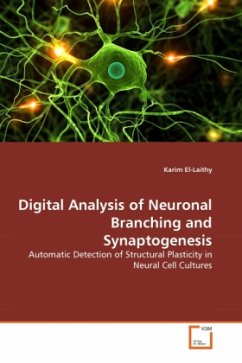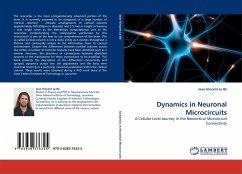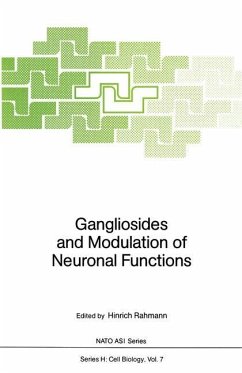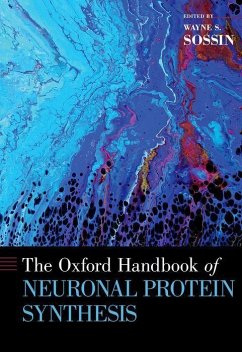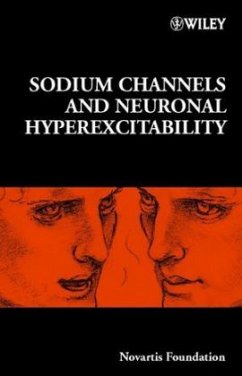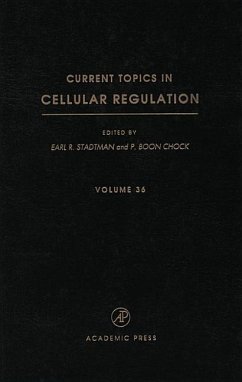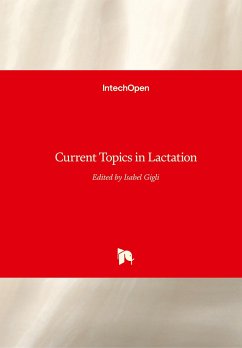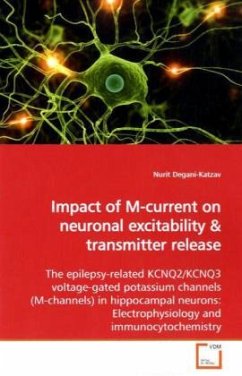
Impact of M-current on neuronal excitability
The epilepsy-related KCNQ2/KCNQ3 voltage-gated potassium channels (M-channels) in hippocampal neurons: Electrophysiology and immunocytochemistry
Versandkostenfrei!
Versandfertig in 6-10 Tagen
39,99 €
inkl. MwSt.

PAYBACK Punkte
20 °P sammeln!
The M-current (of the KCNQ2/3 channel) is voltage-gated potassium current that controls neuronal excitability. Mutations of the KCNQ2/KCNQ3 genes cause BFNC, a neonatal form of epilepsy. Despite substantial research, we do not understand yet the mechanisms by which M-channels modulate neuronal excitability. This book, therefore, evaluates the impact of these channels on the excitability of hippocampal neurons and transmitter release. It appraises the impact of M-channels on spontaneous excitatory/inhibitory post-synaptic currents (sEPSCs/sIPSCs), as well as miniature EPSCs/IPSCs. It also asses...
The M-current (of the KCNQ2/3 channel) is voltage-
gated potassium current that controls neuronal
excitability. Mutations of the KCNQ2/KCNQ3 genes
cause BFNC, a neonatal form of epilepsy. Despite
substantial research, we do not understand yet the
mechanisms by which M-channels modulate neuronal
excitability. This book, therefore, evaluates the
impact of these channels on the excitability of
hippocampal neurons and transmitter release. It
appraises the impact of M-channels on spontaneous
excitatory/inhibitory post-synaptic currents
(sEPSCs/sIPSCs), as well as miniature EPSCs/IPSCs.
It also assesses the possible contribution of
somatic versus axonal/presynaptic M-channels to
transmitter release, and explores a possible
functional interaction between M-channels and SNARE
proteins such as syntaxin-1A. This book should
provide a basic understanding of the
pathophysiological processes of neuronal
hyperexcitability and also afford a therapeutic
potential for the treatment of major neurological
disorders like epilepsy, migraine or neuropathic
pain. The book is appointed to scientists and to any
person who is interested in this field.
gated potassium current that controls neuronal
excitability. Mutations of the KCNQ2/KCNQ3 genes
cause BFNC, a neonatal form of epilepsy. Despite
substantial research, we do not understand yet the
mechanisms by which M-channels modulate neuronal
excitability. This book, therefore, evaluates the
impact of these channels on the excitability of
hippocampal neurons and transmitter release. It
appraises the impact of M-channels on spontaneous
excitatory/inhibitory post-synaptic currents
(sEPSCs/sIPSCs), as well as miniature EPSCs/IPSCs.
It also assesses the possible contribution of
somatic versus axonal/presynaptic M-channels to
transmitter release, and explores a possible
functional interaction between M-channels and SNARE
proteins such as syntaxin-1A. This book should
provide a basic understanding of the
pathophysiological processes of neuronal
hyperexcitability and also afford a therapeutic
potential for the treatment of major neurological
disorders like epilepsy, migraine or neuropathic
pain. The book is appointed to scientists and to any
person who is interested in this field.



